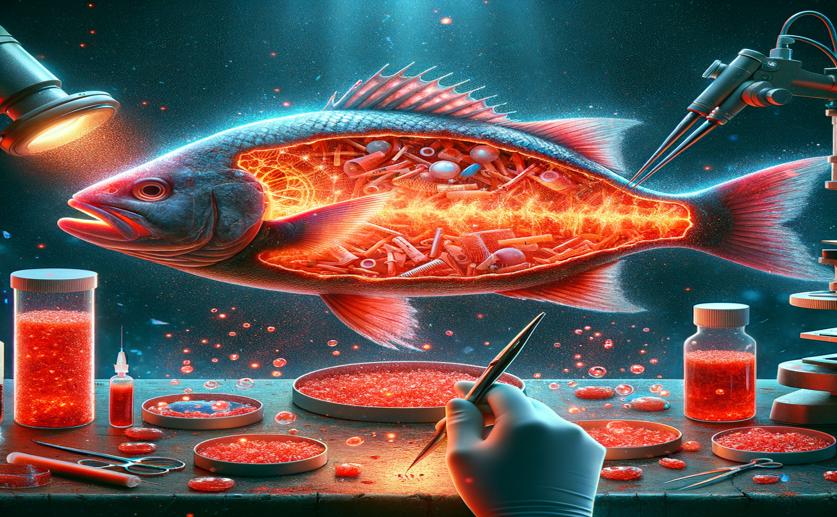
Rapid Detection of Microplastics in Seafood Using Nile Red Staining
Jim Crocker
11th May, 2024

Image Source: Natural Science News, 2024
Key Findings
- A new method detects microplastics in seafood with over 95% accuracy and only 1% error
- The method is fast, analyzing samples in 0.02–0.06 hours per square centimeter, much quicker than previous techniques
- While promising, the study also notes challenges like variable recovery rates, indicating a need for standardized procedures
EnvironmentHealthMarine Biology
References
Main Study
1) Nile red staining for rapid screening of plastic-suspect particles in edible seafood tissues
Published 10th May, 2024
https://doi.org/10.1007/s00216-024-05296-8
Related Studies
2) Accumulation and fragmentation of plastic debris in global environments.
3) Adherence of microplastics to soft tissue of mussels: A novel way to uptake microplastics beyond ingestion.
4) A review of microplastic pollution in commercial fish for human consumption.
5) Microplastics in vacuum packages of frozen and glazed icefish (Neosalanx spp.): A freshwater fish intended for human consumption.



 8th March, 2024 | Jenn Hoskins
8th March, 2024 | Jenn Hoskins